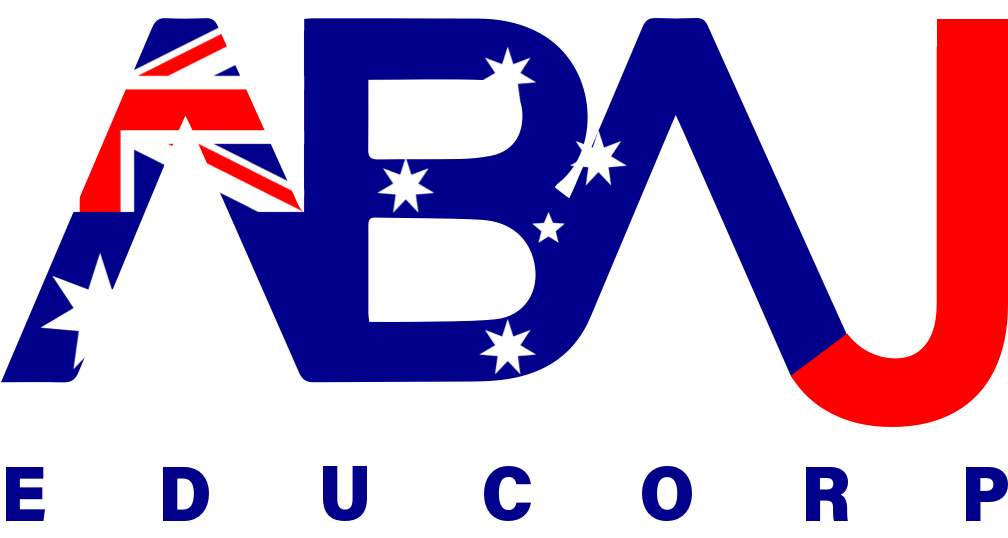Student Profile Evolution
- Home
- Student Profile Evolution
Student Profile Evolution

A student profile is a detailed summary of a student’s academic background, interests, accomplishments, and goals. It is an evolving document that changes as the student progresses through their educational journey.
Overall, a student profile is a dynamic document that evolves as the student progresses through their educational journey. By keeping their student profile up-to-date, students can showcase their accomplishments and highlight their strengths and interests to potential employers, colleges, and other organizations.
Item2
-
Student Profile Evolution
Student Profile Evolution
-
Student Admission
Student Admission
-
Enrollment Assistance
Enrollment Assistance
-
Visa Assistance
Visa Assistance
-
University or College Transfer
University or College Transfer
-
Popular Courses
Popular Courses
-
Professional Year Program
Professional Year Program
1.Personal Information:
This includes basic information such as the student's name, age, gender, and contact information. As the student progresses through their educational journey, they may also include information about their work experience, internships, and other relevant experiences.
2.Academic Background:
This includes information about the student's academic performance, including their GPA, standardized test scores, and courses taken. As the student progresses through their academic career, they may also include information about their research projects, academic honors, and other academic achievements.
3.Extracurricular Activities:
This includes information about the student's involvement in clubs, sports teams, volunteer organizations, and other activities outside of the classroom. As the student progresses through their educational journey, they may also include information about leadership positions, awards, and other accomplishments related to their extracurricular activities.
4.Interests and Goals:
This includes information about the student's career aspirations, academic interests, and personal goals. As the student progresses through their educational journey, they may refine their interests and goals and adjust their student profile accordingly.
5.Skills and Strengths:
This includes information about the student's skills and strengths, including their communication skills, leadership abilities, and technical skills. As the student progresses through their educational journey, they may gain new skills and strengths and adjust their student profile accordingly.
Applying to an Australian Education Institute

The criteria for student admission in Australia can vary depending on the level of study, the course, and the institution you are applying to. However, some common requirements for international students applying for admission to Australian universities or colleges include:
1. Academic Requirements2. English Language Proficiency
3. Genuine Temporary Entrant (GTE) Requirement
4. Health and Character Requirements:
5. Work Experience or Other Skills:
It is important to note that admission requirements may vary depending on the institution, course, and level of study. It is recommended that you check the specific admission requirements for the course and institution you are interested in before applying.
1.Application Guides:
These guides provide detailed instructions on how to fill out an application, including what information to include and how to submit the application.
2.Admissions Requirements:
This type of content outlines the admissions requirements for a particular course, program, or institution. It may include information on required documents, test scores, and GPA requirements.
3.Enrollment Deadlines:
Enrollment deadlines can be confusing, especially if there are multiple deadlines for different programs or courses. Enrollment assistance content can provide clear information on deadlines, including when applications are due, when enrollment deposits must be paid, and when orientation sessions will be held.
4.Financial aid Resources:
Many students need financial aid to help pay for their education, and enrollment assistance content can provide information on financial aid opportunities, including scholarships, grants, and loans.
5.Orientation Materials:
Once a student has been accepted into a program, enrollment assistance content can provide orientation materials that help them get started with their new course or program. This may include information on course schedules, required textbooks, and campus resources.
6.Advising and Support Services:
Students may need additional support and guidance during the enrollment process, and enrollment assistance content can provide information on advising and support services that are available to help them navigate the process.
Overall, enrollment assistance content is designed to help students successfully enroll in their chosen course or program by providing clear, easy-to-understand information and resources that guide them through the process from start to finish.
1.Visa Eligibility Assessment:
This service involves evaluating an individual's eligibility for a visa based on their personal circumstances, such as their purpose of travel, duration of stay, and intended destination.
2.Visa Application Support:
This service includes assisting with the preparation and submission of visa applications, ensuring that all required documents are complete and accurate, and providing guidance on any additional requirements or fees.
3.Visa Tracking and Status Updates:
This service involves tracking the progress of a visa application and providing regular updates to the applicant on its status.
4.Consulate or Embassy Liaison:
This service involves communicating with consulate or embassy officials on behalf of the applicant, including following up on visa applications, resolving any issues or discrepancies, and providing additional documentation if necessary.
5.Document Translation and Certification:
Many visa applications require documentation to be translated into the official language of the destination country and certified by a notary or other authorized official. Visa assistance services may include providing document translation and certification services.
Overall, visa assistance is designed to help individuals navigate the complex and often confusing process of obtaining
Some examples of university or college transfer content may include:
1.Transfer Guides:
These guides provide detailed instructions on how to transfer from one college or university to another, including what information to include in the application and how to submit the application.
2.Transfer Requirements:
This type of content outlines the transfer requirements for a particular college or university, including GPA requirements, course prerequisites, and credit transfer policies.
3.Transfer Deadlines:
Transfer deadlines can be confusing, especially if there are multiple deadlines for different programs or courses. Transfer content can provide clear information on deadlines, including when applications are due, when enrollment deposits must be paid, and when orientation sessions will be held.
4.Credit Transfer Policies:
Many students want to transfer credits earned at one institution to another. Transfer content can provide information on credit transfer policies for a particular college or university, including how credits are evaluated and which credits will be accepted.
5.Financial aid Resources:
Many students need financial aid to help pay for their education, and transfer content can provide information on financial aid opportunities, including scholarships, grants, and loans.
6.Advising and Support Services:
Students may need additional support and guidance during the transfer process, and transfer content can provide information on advising and support services that are available to help them navigate the process.
Overall, university or college transfer in Australia can be a complex process, but with the right information and support, students can successfully transfer between institutions and continue their educational journey.
1.Accounting and Finance
An accounting and finance course typically covers topics related to financial accounting, managerial accounting, financial analysis, and financial management. Here are some of the key concepts that are typically covered in an accounting and finance course:
1.Managerial Accounting
2.Financial Accounting
3.Financial Analysis
4.Financial Management
5.Ethics and Professional Standards
2.Cookery
A cookery course typically covers the fundamentals of cooking, food preparation, and kitchen management. Here are some of the key topics that are typically covered in a cookery course:
1.Culinary Techniques
2.Kitchen Equipment
3.Food Safety and Sanitation
4.Nutrition
5.Menu Planning
6.Kitchen Management
3.Enginnering
Engineering is a broad field that involves the application of scientific and mathematical principles to design, build, and maintain a wide range of systems, structures, and machines. Engineers use their knowledge of physics, chemistry, biology, and mathematics to solve real-world problems and create new technologies. Here are some of the key areas of engineering:
1.Civil Engineering
2.Mechanical Engineering:
3.Electrical Engineering
4.Chemical Engineering
5.Aerospace Engineering
6.Computer Engineering
4.Hospital Management
A Hospitality Management course typically covers the principles of managing and operating businesses in the hospitality industry, including hotels, restaurants, resorts, and event planning companies. Here are some of the key topics that are typically covered in a Hospitality Management course:
1.Hospitality Industry Overview
2.Marketing and Sale
3.Food and Beverage Operations
4.Lodging Operations
5.Event Planning and Management
6.Financial Management
7.Human Resources Management
8.Legal and Regulatory Issues
5.Information Technology
Information Technology (IT) is a field that involves the use of computers, software, and other digital technologies to process and manage information. It encompasses a wide range of activities, from developing software applications and managing databases to designing computer networks and providing technical support to end-users. Here are some of the key areas of Information Technology:
1.Software Development
2.Database Management
3.Computer Networking
4.Cybersecurity
5.Technical Support
6.Web Development
6.Nursing In Australia
Nursing in Australia is a highly respected and well-regarded profession that offers a wide range of career opportunities. Nurses are trained to provide patient care and support to individuals and families in a variety of settings, including hospitals, clinics, community health centers, and private homes. Here are some key aspects of nursing in Australia:
1.Education and Training
2.Registration and Licensing
3.Career Opportunities
4.Salary and Benefits
5.Professional Development
Eligibility for a Professional Year Program in Australia
The PYP is a structured program that combines formal learning and practical work experience. It typically lasts for 44 weeks and consists of two components: 32 weeks of classroom learning and 12 weeks of an unpaid internship placement. The classroom component includes lectures, workshops, and seminars that focus on workplace communication, workplace culture, and job search skills, while the internship component provides practical experience in a professional work setting.
There are several Professional Year Programs (PYPs) available in Australia, each designed for graduates of specific fields.
PYP in Accounting
PYP in Engineering
PYP in IT
These programs are designed to provide international graduates with the skills and knowledge required to succeed in their chosen field in Australia. They offer a combination of formal learning and practical work experience, including internships and professional development opportunities. Successful completion of a PYP can also provide additional points towards skilled migration to Australia.
Documents Required to Enroll in Cheapest PY Program?
1. Application Form
2. Certified Copy of Passport
3. Resume
4. Certificate of IELTS/PTE Score
5. Certified Evidence for Current Visa Status
6. Certified Copies of Academic Documents
7. Result of Relevant Skill Assessment from certified assessment body

